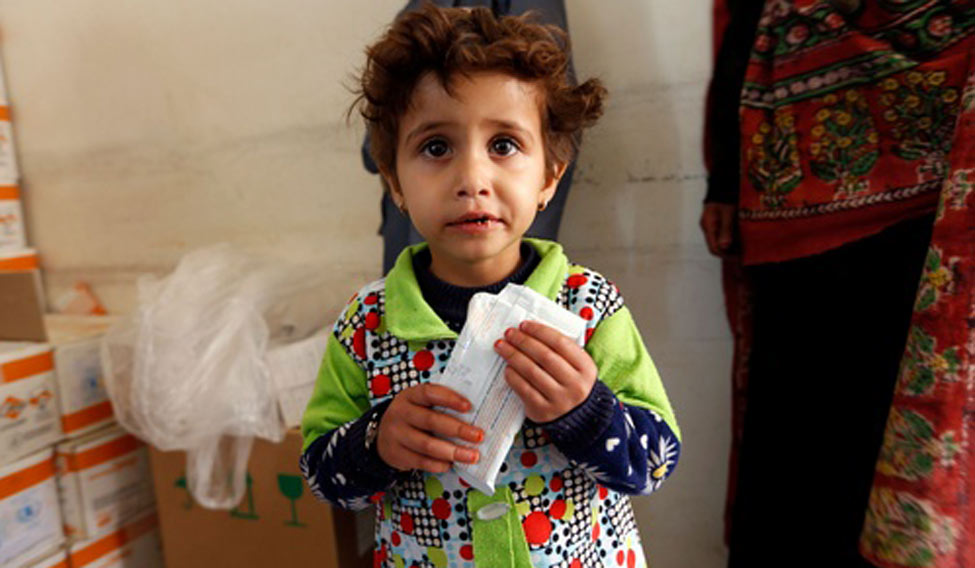The war in Yemen and the subsequent humanitarian crisis are reaching catastrophic proportions after the ambush and murder of former dictator Ali Abdullah Saleh on December 4, 2017. While it is still unclear how his death will impact the country in the long run, a surge of violence and chaos currently strangles the public.
The country’s air, sea and land ports remained largely shut by the Saudi coalition’s blockade, and yet both sides continue air strikes on supposedly known targets, resulting in more civilian deaths. Those seeking refuge in other countries cannot leave the country, and aid, including food, fuel, vaccines or medical supplies, cannot enter the country.
As is the case with great humanitarian crises, the rest of the world is a silent onlooker. A few images that have been released of children affected by famine and cholera are hard to watch and those who can muster enough courage to read about the same can only grieve from afar. It is inconceivable how the poorest nation in the Middle East has been allowed by the international community to be both bombed repeatedly by a coalition of the world’s richest nations and completely blockaded from receiving outside assistance for those needing aid.
Accurate reports of events occurring within Yemen are hard to obtain. The press is intimidated and threatened and journalists reportedly detained and tortured. “These are dark days for media now,” stated a Yemen Times journalist. Last week, one of Yemen’s primary television stations was bombed and 40 journalists were taken hostage, their whereabouts currently unknown. Foreign journalists are scarce in the country. Most countries, including India which after the rescue of abducted Catholic priest Tom Uzhunnalil restricted all travel to the country since October, have banned entry into Yemen.
The Western nations seem to be content describing the Yemen crises by perpetuating the familiar narrative of a Shia-Sunni conflict—one that is between forces outside Yemen. However, the history of this civil war is more complex than that. The deceased former president Saleh had a huge role in fomenting the crisis. Saleh was an ex-military officer who ruled Yemen authoritatively for 33 long years, breeding a movement of discontented Islamists known as the Houthis, who grew more powerful with the rise of the Arab Spring.
Saleh was famous for likening his presidency to “dancing on the heads of snakes” and notoriously flipped sides of the conflict. He was a close ally of Saddam Hussein in the 1990’s, but then joined the US-led intervention in Iraq. Saleh led six military operations against the Houthis during his regime, then joined forces with them after being driven from power by his Saudi-backed deputy Hadi in 2012. In early December 2017, as the Saudi coalition continued the blockade on the ports and led eight weeks of air strikes on the country, Saleh indicated that he would join talks with the Saudis, signaling another switch in loyalty which ultimately led to his death.
The Saleh regime was infamous for corruption and for strategically turning tribes and factions against one another for profit. Saleh did not invest in his country’s educational system, in oil or in technology, resulting in Yemen having only a 50 per cent literacy rate, and importing 90 per cent of food sources. Yemen shares a long northern border with Saudi Arabia, who has a bottomless budget to use weaponry. US President Donald Trump has bragged of selling $110 billion dollars of weapons to Saudi Arabia and while this number is likely exaggerated, infinite resources are at Saudi’s disposal to pursue a campaign of indiscriminate bombing to drive out Houthi “terrorists”. Human Rights Watch reported the coalition targeted schools, medical clinics, agriculture and water sources, Doctors Without Borders (MSF) reported over 100 instances of Saudi forces attacking hospitals.
Where is the United Nations in this? Some say they are helpless in the face of the Saudi coalition forces, which include Oman, UAE, and the US among the world’s richest countries. In 2016, after mounting pressure to investigate possible war crimes committed by Saudi forces, Saudi Arabia was allowed to investigate their own crimes. Not surprisingly, they absolved themselves from any wrongdoing, including the bombing of a school for the blind. The UN Human Rights Council voted to launch an independent investigation at the end of September 2017.
We have been in this situation before. We watched the horrors of Bosnia and Rwanda in the 90’s, and have recently witnessed the atrocities in Syria and Myanmar. The citizens of Yemen cannot access safety even if they want to. The most recent UN refugee report states Yemen has 20.7 million people (80 per cent of the population) needing humanitarian assistance. Out of this, roughly two million are displaced within the country, their homes bombed and are now living in unstable and unsanitary conditions. Only 280,000 people have managed to escape the country and seek refuge in neighboring countries, many crossing the Mandeb Strait and arriving in Somalia, Ethiopia and Sudan. When citizens of a country are seeking refuge in countries also producing refugees, the world is in an irrefutably desperate state of affairs.
We are at another crossroads in the history of inaction. It is up to us as citizens to collectively exert pressure on the delegates of out own countries to ensure that the Yemen crisis is immediately addressed. Spread the word. Call your delegates. Donate to the agencies on the ground responding round-the-clock to the medical and aid needs. We all can do something.





